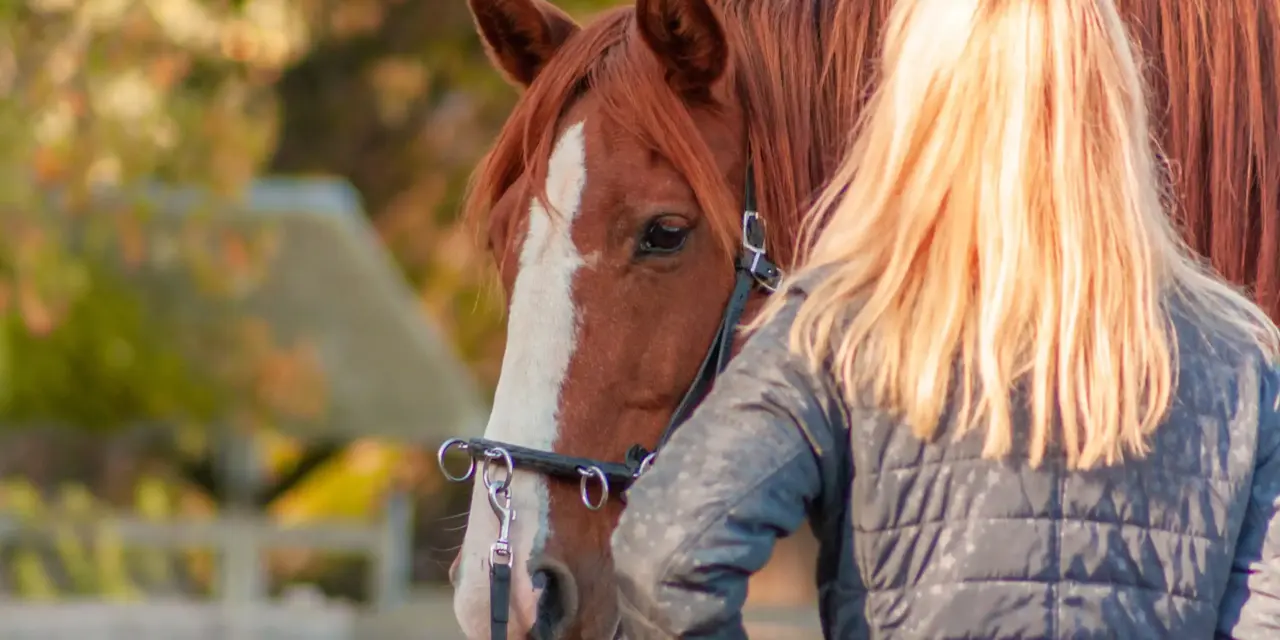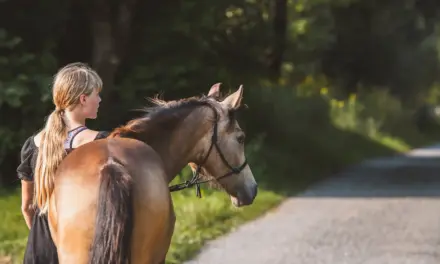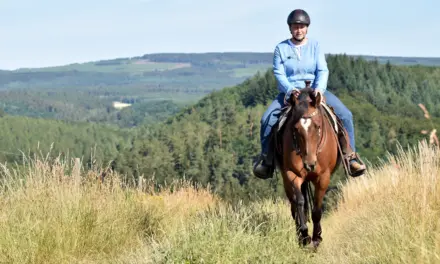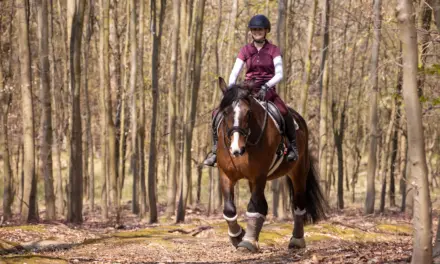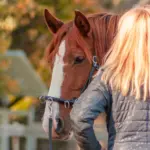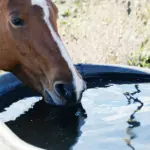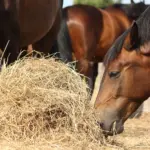Key points at a glance:
- Building trust comes first – without a solid basis of trust, effective groundwork is impossible
- Establish the basic cues step by step – halt, forwards and backwards form the foundation of all exercises
- Timing is everything – choosing the right moment for praise and correction makes all the difference to learning
- Small steps lead to success – pushing too hard destroys motivation and trust
- Every horse learns differently – adapt your approach to your horse’s temperament and previous experience
Preparing a horse for groundwork is a crucial step that largely determines whether future training sessions will be successful or not. Every horse comes with its own background and experiences, and the way the first cues are introduced and established has a lasting influence on all the work that follows.
Establishing trust as the foundation
Before you can start any structured groundwork, you first need to build a solid foundation of trust with your horse. Trust doesn’t appear overnight – it grows through lots of small, positive experiences. Calm, relaxed moments together – during grooming, feeding or simply spending quiet time side by side – are where it all begins.
The horse must learn that the human is predictable and fair. This means giving clear, consistent signals and responding appropriately to the horse’s reactions. During this phase, anything that could frighten or unsettle the horse should be avoided. Loud noises, sudden movements or inconsistent responses can quickly destroy trust.
It is particularly important to understand the horse’s individual personality. A nervous horse needs more time and patience, a dominant horse needs clear boundaries, a curious horse needs variety, and a lethargic horse needs motivation. Taking time to observe the horse and understand its body language will be of enormous benefit later on during groundwork.
The first cue: standing still
The most important cue the horse must learn is to stand still on command. This cue forms the foundation for further groundwork and is essential for safety. The verbal cue ‘halt’ or ‘stand’ should be combined with clear body language – stopping your own movement and straightening your posture.
The exercise begins at the walk: while walking together, give the halt cue. If the horse does not stop immediately, reinforce the cue with a gentle pull on the halter or light pressure on the chest. As soon as the horse takes even one step less or hesitates, it should be praised immediately. The timing of this praise is crucial – it must occur at the exact moment the desired behaviour is shown.
Many horses understand this cue intuitively, as it corresponds to their natural herd dynamics. In the herd, when the lead horses stop, it means for everyone else: ‘Stop, we stay here!’ This natural predisposition can be used and built upon. Over time, the halt cue can be refined and given even from a greater distance.
Forward – initiating movement
Moving forward on cue is the second fundamental element of groundwork. This is not just about the horse moving, but about it doing so in response to a cue while remaining attentive. A clear verbal command such as ‘forward’ or ‘walk on’ should be supported by appropriate body language.
Walking forward yourself while looking in the direction you want to go is natural leadership. Most horses follow this instinctively. If the horse hesitates, the cue can be reinforced with a light touch of the whip on the hind leg or gentle pressure with the hand. It is important that the cue stops immediately as soon as the horse responds.
To begin with, work should take place only at the walk; the pace should be increased only once the horse reliably understands the basic cues. A horse that walks attentively and obediently will also be cooperative in the higher gaits. A horse that already pulls or is inattentive at the walk will usually be even more difficult to control in faster gaits.
Backwards – building respect and trust
Stepping backwards is one of the most valuable exercises in groundwork, as it develops both respect and trust. For horses, moving backwards is often uncomfortable and requires a high degree of trust in the handler. At the same time, it clearly establishes the handler’s leadership.
The process should start with gentle pressure on the horse’s chest, combined with the voice command “Back”. Many horses initially react with resistance or a lack of understanding—this is completely normal. Patience and consistency in the signal are important, without increasing the pressure. As soon as the horse takes even a single step back or shifts its weight, the pressure should immediately be released, and the horse should be praised extensively.
Initially, only one step should be expected, and the expectation should be built up slowly. The act of stepping backwards must never feel threatening or frightening to the horse. A correctly executed rein-back is rhythmic, straight, and without haste. The horse should remain relaxed and show trust in the handler’s guidance.
The significance of correct timing
The timing of the signals, and especially the reactions (i.e., the release of pressure or the reward), is the key to successful learning. Horses learn through the immediate association of a behaviour with its consequence. Praise or correction that is given too late loses its effectiveness because the horse can no longer establish the connection.
The rule is: praise should occur within three seconds of the desired behaviour—better yet, immediately. The praise can consist of voice commands, patting, or a short break. The important thing is that the horse perceives it as pleasant. Some horses prefer calm scratching, while others are easily motivated by treats.
Equally important is the correct timing for corrections. A correction should interrupt the undesired behaviour, not punish it. It must therefore be applied the moment the undesired behaviour is shown, not afterwards. A gentle but firm correction at the right time is far more effective than a strong reaction given too late. The best approach to correcting an undesired behaviour is by having the horse perform a different exercise, so that the attention is not even drawn to the undesired behaviour, but is immediately and positively redirected into something else.
Developing attention and focus
A fundamental aspect of groundwork is the horse’s attention. It should learn to direct its concentration towards the person and not towards the environment or other distractions. Simple exercises designed to manage attention are the starting point: changes of direction, variations in pace, or unannounced halts.
Every situation in which the horse is attentive on its own initiative should be rewarded. This could be a glance towards the person, stopping when the handler halts, or an immediate reaction to a signal. These small moments of attention are the building blocks for successful communication.
If the horse is distracted, the horse’s attention should be brought back without punishment. A light tap with the whip, a change of direction, or a short address can be sufficient. Attention should not be forced, but earned through interesting and engaged work.
Setting boundaries and building respect
Respect in groundwork does not mean fear, but rather the recognition of the leadership role. The horse should learn to respect the human’s space and react to their signals because it trusts them and acknowledges the human as a competent leader. Clear boundaries should be set, but the handler must always remain fair and predictable.
Pushing, nibbling, or shoving should not be tolerated, but the reaction to these behaviours should not be aggressive; rather, it should consist of clear corrections. A firm “No” combined with an appropriate physical reaction—such as pushing the horse’s nose away or taking a step towards the horse—is usually sufficient.
Maintaining personal space is particularly important. The horse should learn that there is an area around the human that it may only enter by invitation. This is not just a matter of respect, but also of safety. Practising sending the horse away and calling it back to oneself should be done regularly.
Individual approach based on horse type
Every horse is unique and requires an adapted approach. Sensitive horses need more time and softer signals, while confident horses require clearer boundaries. Young horses are often playful and easily distracted, while older horses may be set in their habits.
The horse’s reactions should be observed closely and the methods should be adjusted accordingly. A horse that blocks when under too much pressure needs more time and a gentler approach. A horse that tries to take over the leadership requires more consistent boundaries.
The horse’s previous experiences should also be taken into account. A horse with bad experiences in groundwork may need more time to gain trust. A completely inexperienced horse, on the other hand, brings no negative imprints but may also be insecure because everything is new.

Avoiding common mistakes
One of the most common mistakes in the initial phase is impatience. Anyone who wants too much too quickly will overwhelm the horse and jeopardise the learning process. Every learning step should be given the time it needs, even if that means that several sessions are required for a single signal.
A further mistake is inconsistent behaviour. If a behaviour is ignored today and responded to tomorrow, this leads to confusion for the horse. One should remain predictable and reliable in the signals and reactions.
Also, emotions such as frustration or anger should be avoided being transferred to the horse. Horses react very sensitively to human moods and their willingness to learn is impaired if they sense stress or negativity.
Conclusion – patience and systematics lead to the goal
The preparation of the horse for groundwork is an investment that pays off in the long run. As with riding, it is advisable in groundwork to take plenty of time and to lay a solid foundation, as this is the basis for all further exercises. A horse that executes the first signals reliably and confidently will also master more complex tasks with pleasure.
Learning is an individual process—both for the human and for the horse. Small advances should be celebrated, and every day should be seen as a new opportunity to improve communication. With patience, consistency, and the right approach, a harmonious working relationship is built that brings joy to both partners.
- Preparing the horse for groundwork - 10. November 2025
- Lactate in the horse muscle: From misunderstood ‘waste product’ to performance booster - 26. August 2025
- How horse muscles move: muscle contraction in detail - 26. August 2025

